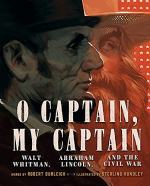
|
| Name: _________________________ | Period: ___________________ |
This quiz consists of 5 multiple choice and 5 short answer questions through Section 1: "O Captain! My Captain!" lines 1-24.
Multiple Choice Questions
1. What is the most common type of metrical foot in "O Captain! My Captain!"?
(a) The iamb.
(b) The trochee.
(c) The spondee.
(d) The dactyl.
2. What is a "keel" (line 4)?
(a) A flat structure at the bottom of a ship, designed to add stability.
(b) A part of a ship's steering mechanism, found at the back of the ship.
(c) The central and largest sail on a three-masted ship.
(d) A measurement of the speed a ship is traveling.
3. What is the rhyme pattern of the first four lines of each stanza?
(a) ABCB.
(b) ABAC.
(c) ABBA.
(d) AABB.
4. Who is the speaker of the poem?
(a) A soldier.
(b) A doctor.
(c) A sailor.
(d) A writer.
5. Line 5, " But O heart! heart! heart!" is an example of which technique?
(a) Euphemism.
(b) Paradox.
(c) Apostrophe.
(d) Aphorism.
Short Answer Questions
1. What does it mean that the people are "exulting"?
2. Which is the best interpretation of line 9, when the speaker urges "O Captain! my Captain! rise up and hear the bells"?
3. In the second quatrain of the second stanza, what becomes clear about the speaker's state of mind?
4. Which technique is evident in the phrase "for you the flag is flung" (line 10)?
5. In context, the literal meaning of the word "rack" in line two is which of the following?
|
This section contains 322 words (approx. 2 pages at 300 words per page) |

|




